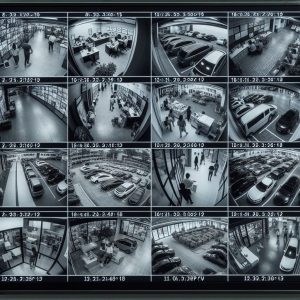Introduction
Closed-circuit television (CCTV) systems have become a prominent feature in urban environments worldwide, including New Zealand. These systems are implemented with the aim of deterring criminal activity, enhancing public safety, and assisting law enforcement in investigations. This article reviews various studies on the effectiveness of CCTV in crime prevention in New Zealand, examining their methodologies, findings, and implications.
Historical Context and Adoption in New Zealand
The adoption of CCTV in New Zealand has been influenced by international trends and local needs. Local authorities and police have been strong proponents of CCTV, citing its potential to reduce crime and improve public safety.
Methodologies of Studies
Research on the effectiveness of CCTV in New Zealand typically involves comparing crime rates before and after the installation of cameras, often using control areas without CCTV for comparison. Studies also consider the context in which CCTV is used, such as car parks, retail environments, and public spaces.
Key Findings
- Crime Reduction: International evidence suggests that CCTV can be effective in reducing crime when tailored to specific contexts. For example, actively monitored CCTV in car parks can reduce crime by up to 54% when combined with other interventions such as improved lighting. However, there is limited specific data on the overall impact of CCTV on crime rates in New Zealand.
- Deterrence Effect: The presence of CCTV cameras can act as a deterrent to potential offenders. Studies indicate that the visibility of cameras and the awareness that activities are being monitored can discourage criminal behavior. This deterrence effect is particularly noted in crimes such as theft and vandalism.
- Public Reassurance: CCTV systems can enhance the public’s sense of safety and security. Knowing that surveillance is in place can reduce fear of crime and encourage the use of public spaces.
- Assistance in Investigations: CCTV footage can be invaluable in criminal investigations, providing evidence that can lead to the identification and apprehension of suspects. This is particularly important in high-profile cases and incidents where eyewitnesses are not available.
Limitations and Concerns
- Privacy Issues: The widespread use of CCTV raises significant privacy concerns. The indiscriminate gathering of information on law-abiding citizens can lead to potential misuse and abuse of surveillance data.
- Cost-Effectiveness: The financial investment required for installing and maintaining CCTV systems is substantial. Some studies question whether the benefits justify the costs, particularly when the contribution of CCTV to crime reduction is relatively small.
- Displacement Effect: There is evidence to suggest that CCTV may displace crime rather than eliminate it. Criminals may simply move their activities to areas not covered by cameras, leading to a redistribution rather than a reduction of crime.
- False Sense of Security: The presence of CCTV can create a false sense of security, leading individuals to take fewer personal precautions. This can potentially increase vulnerability to crime in areas not covered by surveillance.
Case Studies in New Zealand
- Retail Environments: A study on retail security highlighted that CCTV is more effective when part of an integrated security solution involving human monitoring. The deterrent value of CCTV increases significantly when there is active monitoring by security personnel.
- Public Spaces: Local authorities in New Zealand have installed CCTV in various public spaces to monitor and deter anti-social behavior. While there is anecdotal evidence of its effectiveness, comprehensive studies evaluating its impact on crime rates are limited.
- Car Parks: Similar to international findings, CCTV in New Zealand car parks has shown promise in reducing vehicle-related crimes when combined with other measures such as improved lighting and active monitoring.
Conclusion
The effectiveness of CCTV in crime prevention in New Zealand is a complex issue with both promising and inconclusive findings. While there is evidence to support its role in deterring crime, enhancing public safety, and aiding investigations, significant limitations and concerns remain. Privacy issues, cost-effectiveness, crime displacement, and the potential for a false sense of security are critical factors that need to be considered. Future research should continue to explore these dimensions, aiming to optimize the use of CCTV while addressing its drawbacks.





